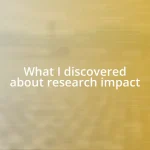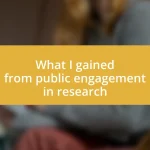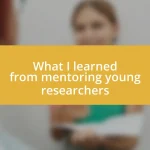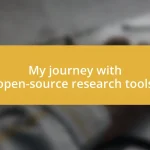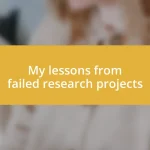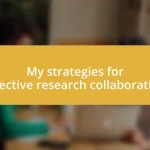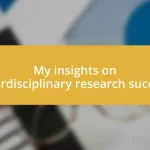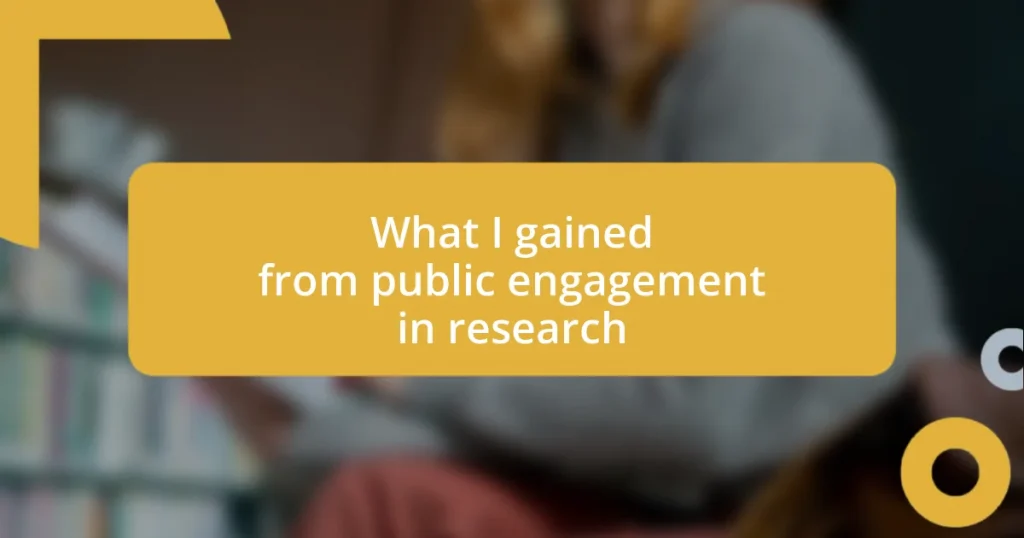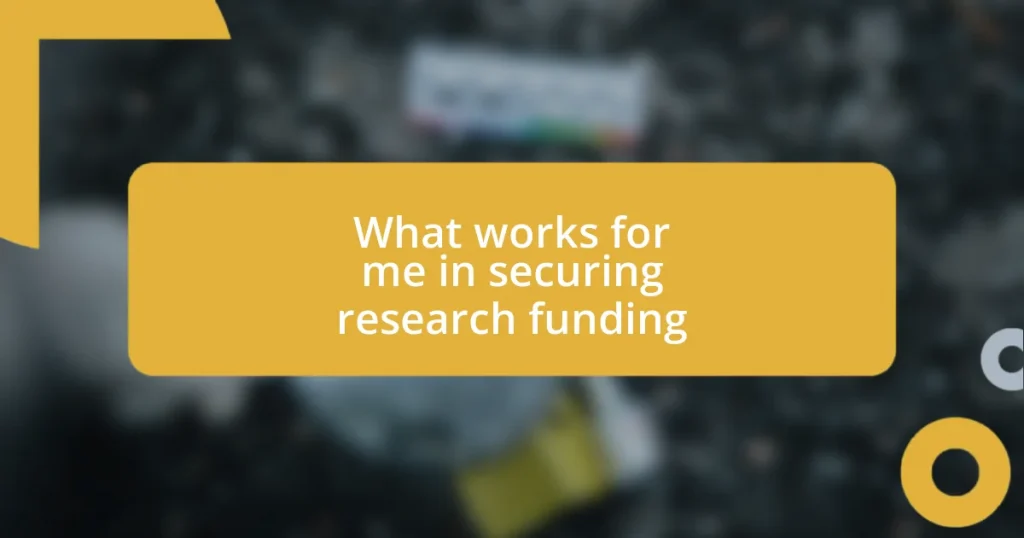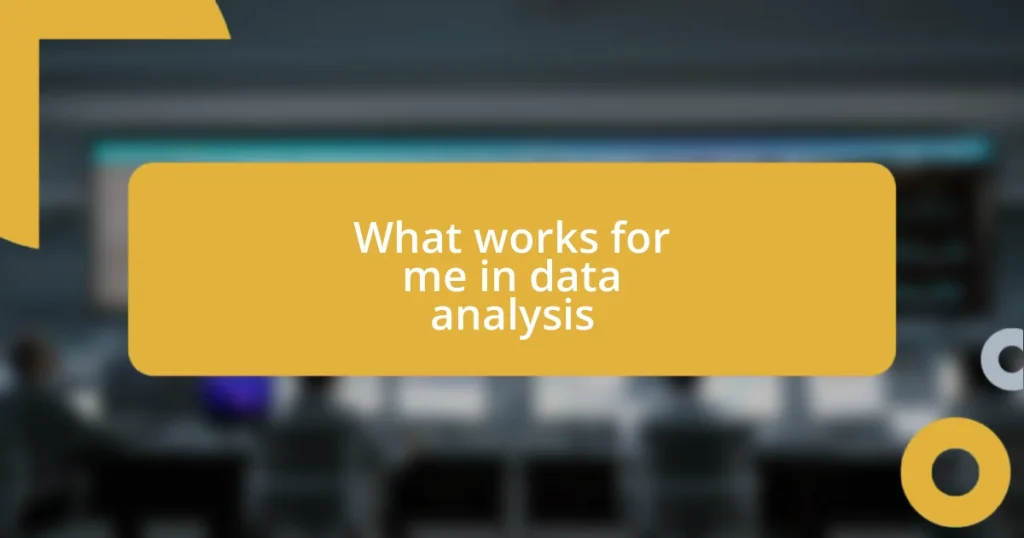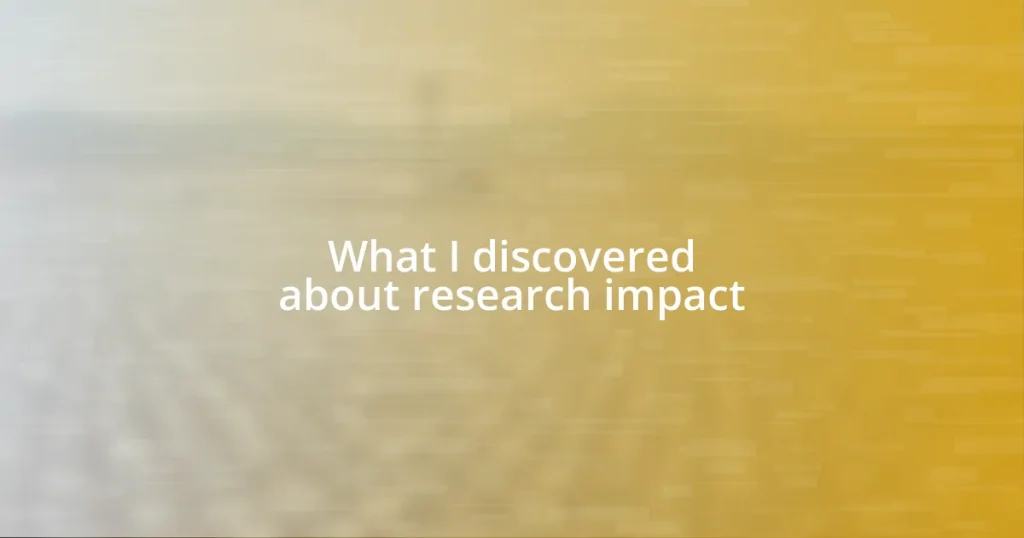Key takeaways:
- Public engagement in research cultivates curiosity and fosters meaningful connections between researchers and the community, enhancing the relevance of research.
- Effective strategies for engagement include using accessible language, fostering dialogue, and collaborating with local organizations, which lead to richer discussions and shared ownership of knowledge.
- Future trends in public engagement involve co-creation with communities, integrating technology for immersive experiences, and emphasizing transparency to build trust and deeper connections.
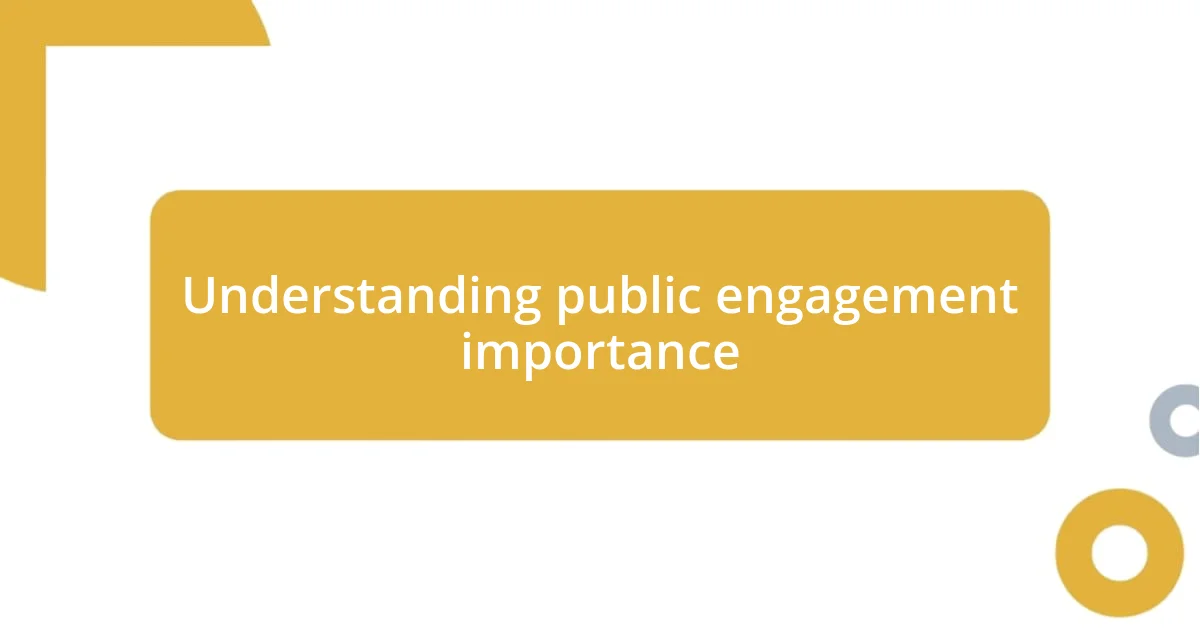
Understanding public engagement importance
Public engagement in research is not just beneficial; it’s essential. For instance, when I participated in a community science fair, I realized how eager people are to understand complex research. Their curiosity reminded me that knowledge isn’t just confined to academia—it’s a collective endeavor that thrives on shared insights.
One striking moment for me was when a local teacher approached my booth, expressing her excitement about translating my findings into her classroom. It struck me how impactful our research could be when it resonates with educators and students alike. Isn’t it fascinating how science can bridge gaps and ignite passion in unexpected places?
Moreover, engaging with the public offers researchers a unique perspective. When I shared my work with a diverse audience, I received questions I never anticipated—ones that challenged my assumptions and broadened my thinking. Isn’t that what true engagement is about? It’s about fostering a dialogue that fosters understanding and opens the door to innovation.
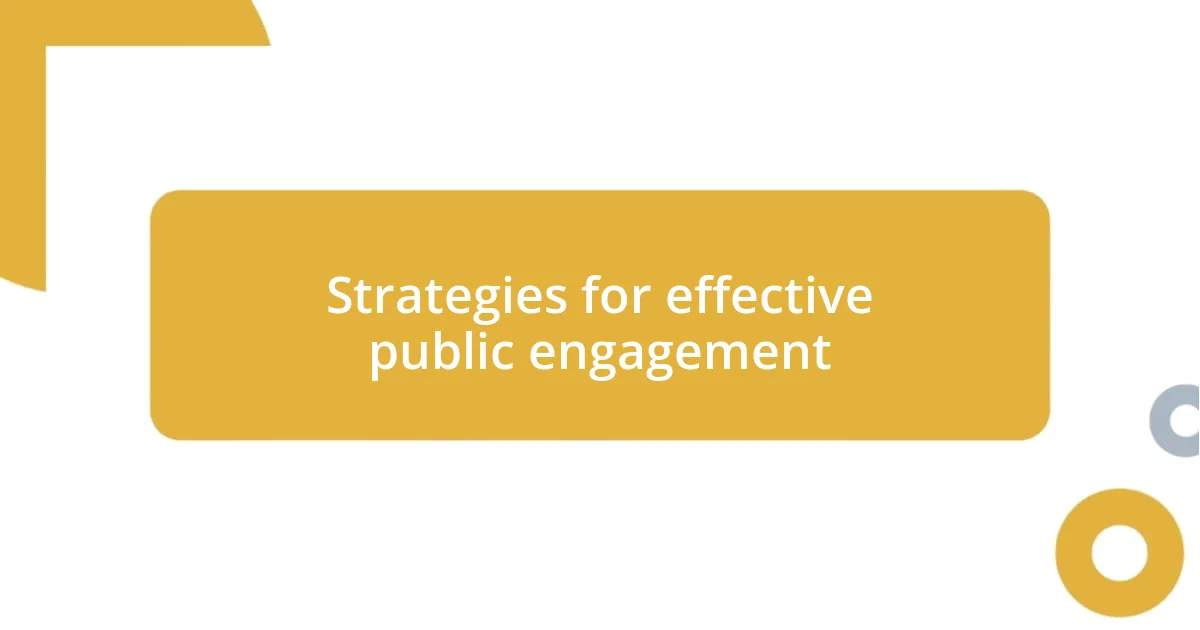
Strategies for effective public engagement
Strategies for effective public engagement
One of the most powerful strategies I’ve found is to meet people where they are. During a recent workshop at a local community center, we created an interactive display that allowed participants to engage directly with our research findings. As I watched young and old alike eagerly explore the exhibit, it struck me how much more meaningful our work felt when it was in their hands. This hands-on approach not only demystified complex information but also sparked genuine conversations, making the engagement memorable for everyone involved.
- Use accessible language: Avoid jargon and technical terms to ensure everyone can understand your research.
- Incorporate multimedia: Visual aids, videos, and infographics can make research more relatable and engaging.
- Foster dialogue: Encourage questions and discussion to create an open environment and deepen the conversation.
- Tailor your message: Understand your audience’s interests and concerns, and frame your research to resonate with them.
- Collaborate with communities: Partnering with local organizations can help legitimize your efforts and expand your reach.
When I reflect on my experiences, I realize each strategy not only strengthens connections but cultivates a sense of shared ownership over the knowledge we create. The more genuine the interaction, the richer the discussions become, ultimately enhancing the impact of our research in the community.
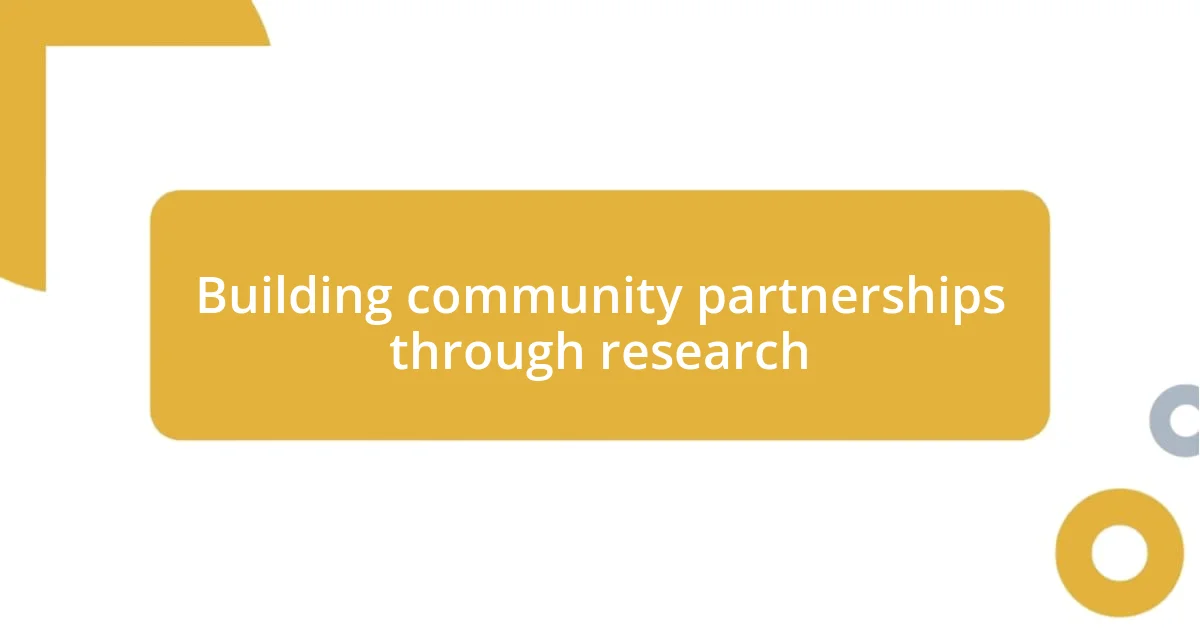
Building community partnerships through research
Building community partnerships through research can be incredibly rewarding. I remember a time when I collaborated with a local nonprofit focused on environmental conservation. While working together, we not only shared resources but also knowledge. It was inspiring to see how our combined efforts led to a community cleanup event that not only raised awareness but also fostered lasting relationships between researchers and community members.
During these partnerships, I discovered that listening is just as critical as sharing. In one instance, a community leader shared concerns that we hadn’t considered in our initial research proposal. Their insights refined our project and made it far more relevant to the community’s actual needs. This experience taught me that building trust and understanding local priorities can empower community voices, making research more impactful and grounded in reality.
Additionally, I’ve found that showcasing our findings in ways that celebrate community achievements is crucial. At a local festival, we shared success stories from our joint projects, which elevated both our research and the community’s pride in their accomplishments. It was uplifting to witness how collaborative efforts not only advance academic understanding but also enhance community identity and resilience.
| Community Partnership Key Elements | Impact on Research |
|---|---|
| Collaboration with local organizations | Enhances relevance and trust |
| Listening to community needs | Refines research focus and goals |
| Community events for dissemination | Strengthens local engagement and pride |
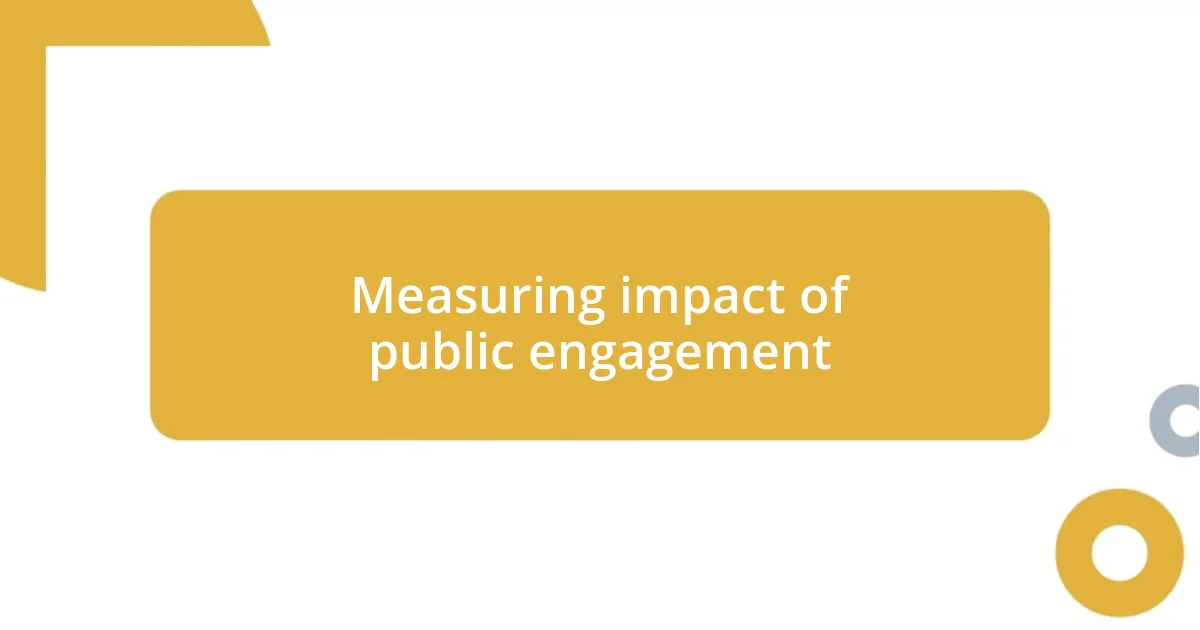
Measuring impact of public engagement
Measuring the impact of public engagement goes beyond just collecting data; it’s about capturing the essence of genuine connections. I’ve noticed that surveys or feedback forms alone often miss the nuanced excitement felt during a community event. For instance, I recall a discussion after a science fair where attendees shared their newfound enthusiasm for environmental issues, revealing how a single conversation sparked a shift in perspective for several participants. How can we quantify that enthusiasm?
Beyond numbers, we often rely on stories to gauge impact. I vividly remember a family who approached me after a workshop, expressing how they intended to transform their backyard into a native garden after learning about local plant species. Moments like this illustrate the real-world effects of our engagement efforts and highlight the importance of narrative in measuring success. Isn’t it fascinating how personal stories can reflect broader shifts in community attitudes?
Lastly, I’ve begun to appreciate the role of ongoing relationships in assessing impact. In my experience, follow-up interactions reveal the longevity of engagement efforts, often resulting in unforeseen collaborations or initiatives. For example, a discussion with a local teacher led to a joint project on renewable energy for her students. Does that not illustrate how a single engagement can ripple out to create broader educational opportunities? In essence, the metrics we use must capture both the immediate excitement and the lasting changes we inspire.
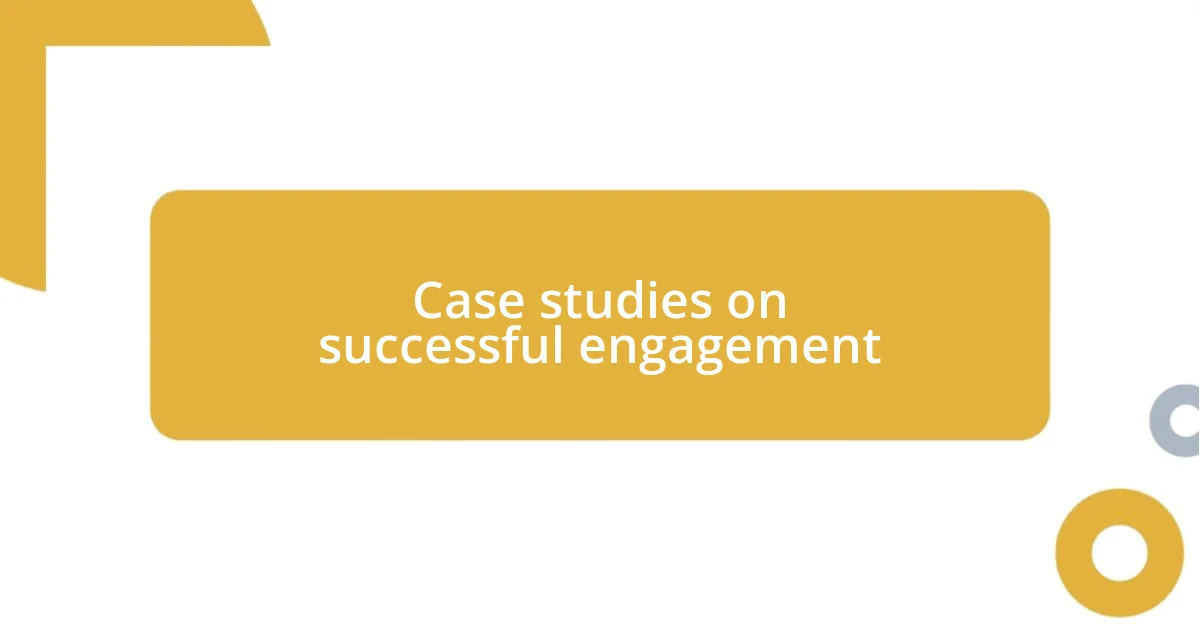
Case studies on successful engagement
One case that stands out to me is when my team partnered with a local school to introduce students to scientific research through hands-on projects. We devised a curriculum that allowed them to conduct their experiments about pollution in nearby waterways. Seeing the students’ bright faces light up with curiosity—which often led to questions I hadn’t anticipated—was a powerful reminder of the impact that meaningful engagement can have on young minds. Isn’t it incredible how a single project can ignite a passion for science in the next generation?
I also remember a community health initiative that aimed to address food deserts in our area. The project became a fruitful collaboration with local farmers and health organizations, leading to workshops on nutrition and cooking classes. The joy I felt when residents shared their newfound cooking skills—and even started cooking family meals together—was unparalleled. How often do we get to witness the direct influence of our research on people’s daily lives, right in front of our eyes?
Another memorable experience was collaborating with artists to create a visual representation of our research findings on urban ecology. We showcased this at a local art fair, and the conversations that emerged were heartwarming. It was fascinating to see attendees—not just researchers—engaging with the data in ways that evoked their emotions and sparked personal connections to the topic. The blend of art and science transformed our boring graphs into something relatable, making me wonder how else we could bridge such gaps in understanding.
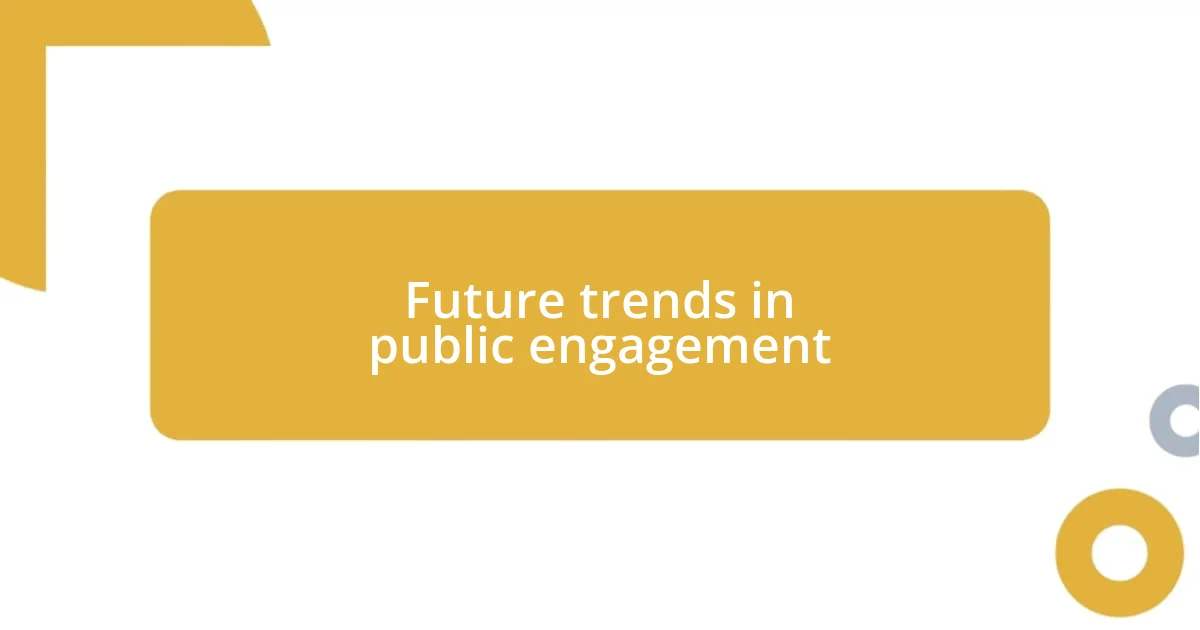
Future trends in public engagement
When I think about future trends in public engagement, I envision a shift towards co-creation. Imagine scientists and community members working hand in hand to shape research questions. I recall a moment during a community brainstorming session where residents expressed their concerns about local air quality. This wasn’t just an exchange of ideas; it felt like a shared mission. How powerful is it when the community has a genuine stake in the research process?
Another trend I’m noticing is the integration of technology. Virtual reality experiences can allow a broader audience to explore complex scientific concepts without feeling overwhelmed. I once participated in a virtual event where participants could ‘walk through’ a coral reef, witnessing its beauty and fragility firsthand. The awe and concern reflected in their faces were invaluable. Could immersive technology become the bridge to deeper understanding and empathy in research?
Lastly, the growing emphasis on transparency and open communication is hard to overlook. In a world saturated with information, I’ve learned that sharing not just results but also the research journey fosters trust. When I started sharing my failures as well as successes during presentations, I was met with surprising warmth and understanding from the audience. Isn’t it interesting how openness can break down barriers and create more meaningful connections?


